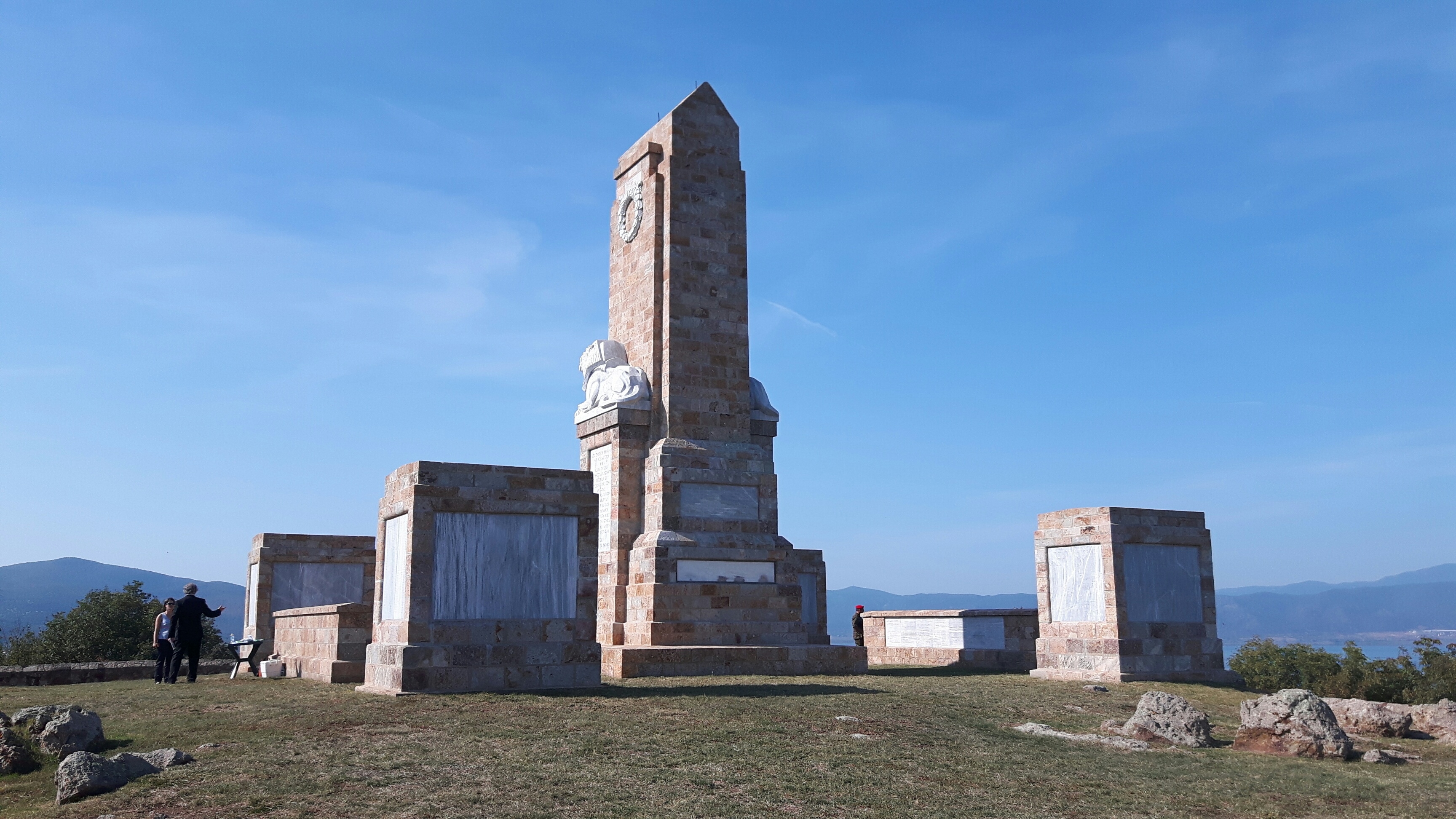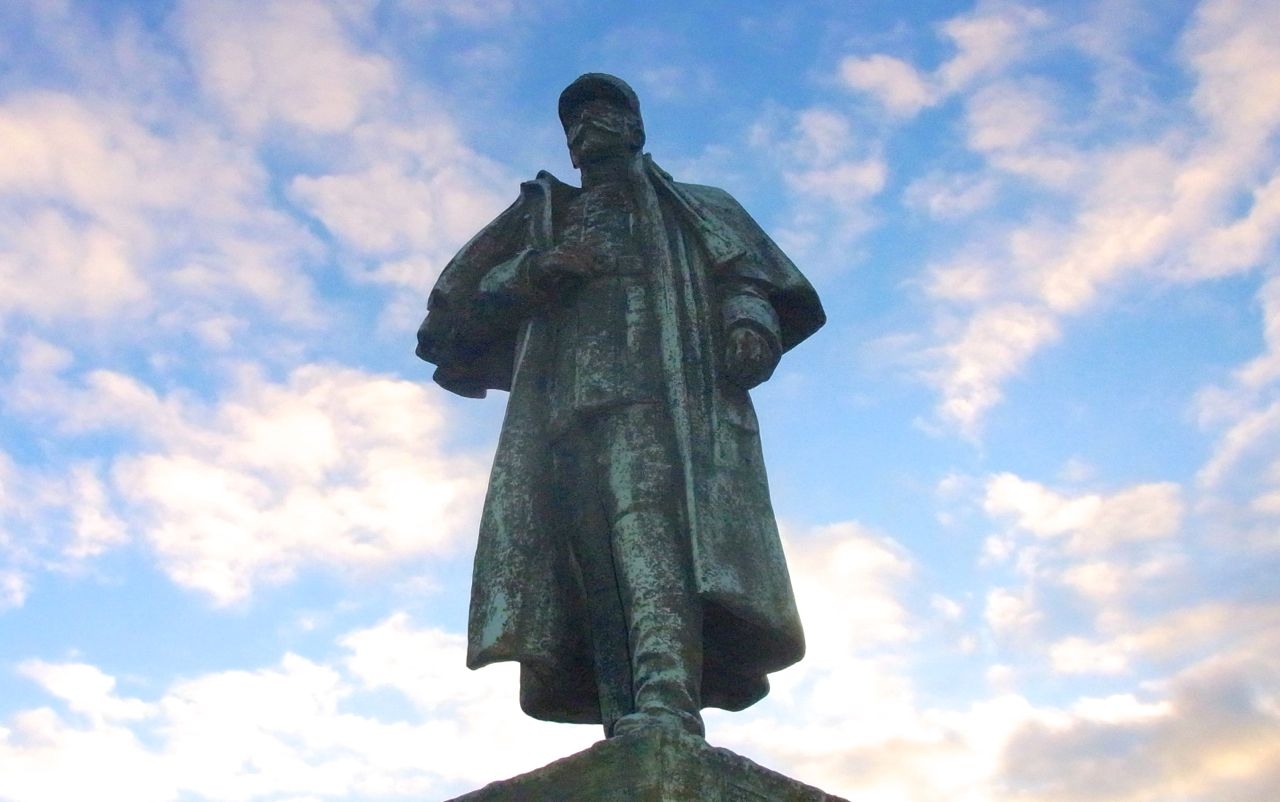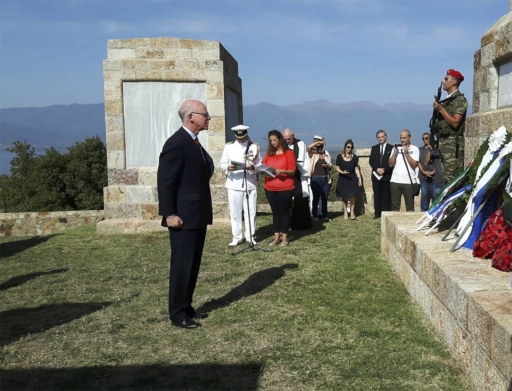A remembrance ceremony has been hosted by the Commonwealth War Graves Commission (CWGC) in Northern Greece as part of a joint effort with the British Embassy in Athens to raise awareness of those lost on the Salonika Front.
The service at the Doiran Memorial on 2 October 2016 marked the 98th anniversary of the end of the campaign on this ‘forgotten front’ of the First World War.
More events will follow in the two years leading up to the 2018 Centenary.
The first British and French troops arrived in the Greek port of Salonika (now Thessaloniki) in October 1915, in a belated attempt to support Serbia in the Balkan war against the Central Powers.
CWGC Director of External relations, Colin Kerr, said: “The CWGC commemorates over 10,000 British and Commonwealth servicemen and women who did not come back from the Salonika campaign in World War One.
“For us, it is not a ‘Forgotten Front’. The memorial at Doiran is the tangible symbol of that sacrifice and we are very pleased to be commemorating the 98th anniversary of the successful 1918 battles, standing alongside – now as then – our friends from the Greek Army.”
 The Doiran Memorial to the Missing, unveiled in 1926, bears the names of more than 2,160 Commonwealth service personnel who have no known grave (Photo © CWGC)
The Doiran Memorial to the Missing, unveiled in 1926, bears the names of more than 2,160 Commonwealth service personnel who have no known grave (Photo © CWGC)
The monument’s construction was partly funded by veterans of the British Salonika Force, who were deployed in the region between 1915 and 1918 as part of a multinational Allied presence facing Bulgarian, German, Austro-Hungarian and Ottoman forces.
Commonwealth regulars, territorials and wartime recruits all served here, supported by many medical and logistical troops, labourers and mule drivers.
Much of the campaign was characterised by stalemate and disease, with a particular threat from malaria.
Around 5,700 Commonwealth servicemen were killed, or died from wounds received in action, and more than 3,700 died from disease.
 General Maurice Sarrail: defender of Verdun in 1914, and later Allied commander at Salonika (Photo: Centenary News)
General Maurice Sarrail: defender of Verdun in 1914, and later Allied commander at Salonika (Photo: Centenary News)
Allied offensives were fought under the command of the French general, Maurice Sarrail, in 1917 and his successor, Louis Franchet d’Espèrey in 1918.
The September 1918 attacks – using Serbian, Greek, British, French and Italian forces – forced Bulgaria out of the Great War and cleared the way for an advance into the Balkans against Austria-Hungary, culminating in the Armistice.
For more on the Salonika Front, see the newly-launched CWGC microsite.
Source: Commonwealth War Graves Commission; Wikipedia
Images: CWGC (memorial & ceremony); Centenary News (Gen. Maurice Sarrail statue at Verdun)
Posted by: CN Editorial Team
